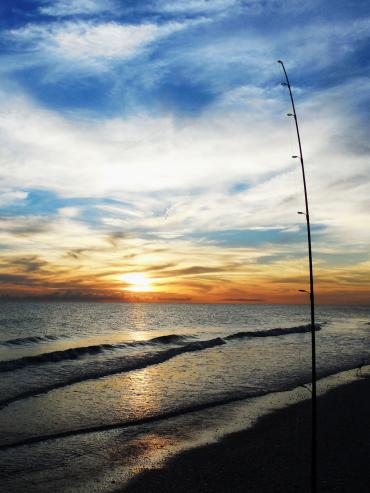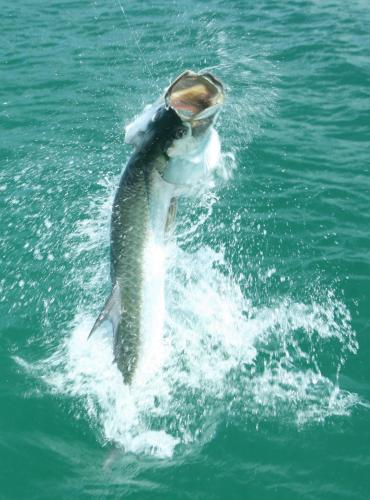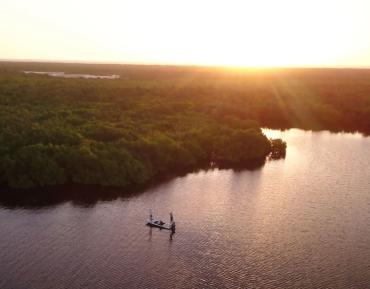 Charlotte Harbor and the Gulf Island Coast make up the second largest natural estuary in Florida, which is one of the most sought-after fishing destinations on the entire Florida Gulf Coast.
Charlotte Harbor and the Gulf Island Coast make up the second largest natural estuary in Florida, which is one of the most sought-after fishing destinations on the entire Florida Gulf Coast.
Many popular sport fish can be caught in Charlotte Harbor year-round, but we've compiled the top five saltwater superstars that attract anglers from all over the world:
The Common Snook
A stealthy “ambush feeder,” the snook is one of the most targeted game fish in Florida.
They are easily identified by their distinctive body shape, protruding lower jaw, and lateral black line along their body.
Snook can measure up to 45 inches and are known to be spirited fighters with hard, fast runs and airborne head shakes.
The best time to target snook is in the spring and early summer, when massive schools spawn in the warm waters of the passes and along the beaches, which results in a lot of hungry and aggressive figh.
In the fall, they retreat inshore to mangroves, canals, and other structures.
The Red Drum (Redfish)
One of the most prevalent sport fish in all of Florida, the redfish is characterized by its deep bronze to light gold coloring and the notorious black spot on its tail. Their stocky shoulders and downward posture make the redfish a solid fighter with bullish runs.
Find them around rock jetties, mangrove shorelines and cruising the grass flats. In the fall and spring, they can be found schooled up in the bays and on the flats.
 The Tarpon
The Tarpon
Charlotte Harbor and Boca Grande Pass make up the “Tarpon Fishing Capital of the World,” where prehistoric, super-sized tarpon are sought after by thrill-seeking anglers. The fabled “Silver King” is a catch-and-release-only game fish known for their impressive acrobatics and monstrous size, reaching up to 8-feet or 280 pounds.
The best time to target tarpon is April through June during their migration and post spawn tarpon can be targeted July through October. Juveniles are often found in the brackish waters and dark canals of the Myakka and Peace Rivers.
The Cobia
The cobia is a hard-fighting fish that commonly weighs 20-50 pounds but can reach up to 100 pounds or more. They have a shark-like appearance with a flat, broad head, sharp spines on their dorsal surface and a dark stripe from gill to tail.
Cobia are a migratory species that pass through Southwest Florida in the winter, then migrate north in the summer. They are often accompanied by rays or other large fish and hang out nearshore around buoys, markers, bridges or shallow reefs and wrecks.
The Grouper
Various grouper species can be found in Charlotte Harbor and nearshore waters including gag, red grouper, black grouper and the infamous giant of the family, the goliath grouper. Typically caught using a bottom-fishing method or spearfishing, these heavyweights can be found hunkered down on reefs, wrecks, bridges and any rocky structure.
The Spotted Seatrout
The seatrout is a favorite of anglers from around the country and is ideal for all skill levels from beginner to experienced. This species is a smaller fish averaging 1-2 pounds, but can reach up to 10 pounds.
During the warm months, seatrout are found inshore, mostly in shallow grass flats. As the temperatures get colder, they will move into deeper waters. Seatrout thrive after cold fronts, making them a staple species in the winter months.
 Be Prepared
Be Prepared
Before planning your fishing trip, visit myfwc.com to get a fishing license and get informed on Florida’s regulations for each species.
Better yet, book a local, licensed fishing guide and you’ll be automatically covered with no need to purchase a license.
Also, check out our handy Fishing Reports for information about which species can be targeted during each month.




